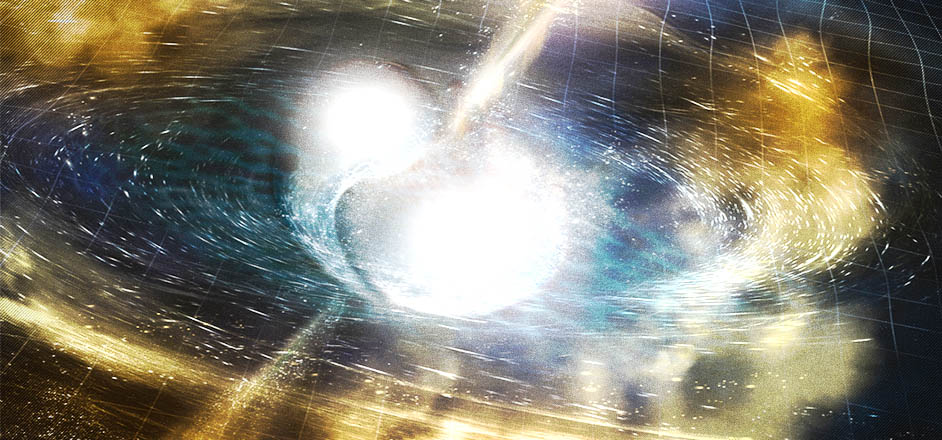Be amazed, scientists can now feel gravity's punch.
Researchers recently announced they've felt a gravitational jolt from space. The kick from two dead stars, when they smashed into each other, actually moved all of us on August 17. Big sensors in Louisiana and Washington State registered the shock.
With newly developed equipment, we can not only see the stars — now, we can also feel them.
"Holy mackerel that's exciting," Michael Dubson, associate chair of the University of Colorado physics department, told us. It's "probably the most exciting thing happening in physics right now."
When stars collide, it sends gravitational ripples out into the universe, like a pebble thrown into a lake.
These waves shake us, rattle us, roll us.
They're too small for our bodies to feel, like a gnat landing on your elbow.
But sensitive instruments can and now do.
And it's like feeling the shock wave from a nuclear explosion 130 million light years away.
This discovery is even cooler because we all felt the stars smashing together — and also saw it happen.
After physicists felt gravity shift, astronomers pointed their telescopes at the sky, and laid eyes on the flash of the stars colliding. It's called a kilonova — which is like a supernova. No one has ever seen a kilonova before, though the gravity waves helped scientists figure out where to look.
Ongoing investigations know that huge collisions like kilonovas aren't just acts of destruction. They're also creation; how some metals are made. The gold in watches didn't actually start out in jewelry stores, and uranium in an atom bomb wasn't cooked up in a lab. They were forged in giant explosions like the one recently observed.
It's possible metals made in this explosion will go on to be used by alien civilizations: for the gold in the watch an alien wears on his tentacles. And the uranium might become the core of an alien weapon, which might fuel some interplanetary war between groups of super-intelligent space creatures one day. And when they obliterate each other in world-ending nuclear holocausts, it's just possible we here on Earth might feel that, too.
Earth scientists have been developing this new sense — the ability to feel ripples in gravity — for 20 years. It's called LIGO — Laser Interferometer Gravitational-Wave Observatory. It first sense the bang of two black holes colliding in 2016. The folks doing it won the Nobel Prize this year.
"People like me were starting to say, is there ever gonna work, and then boom it's working beautiful," said Dubson. "This was such a success story — a brand-new way of looking at the universe."
A new sense for humans, the smartest animals we know about — at least until the aliens show up.



Leave a Reply
You must be logged in to post a comment.